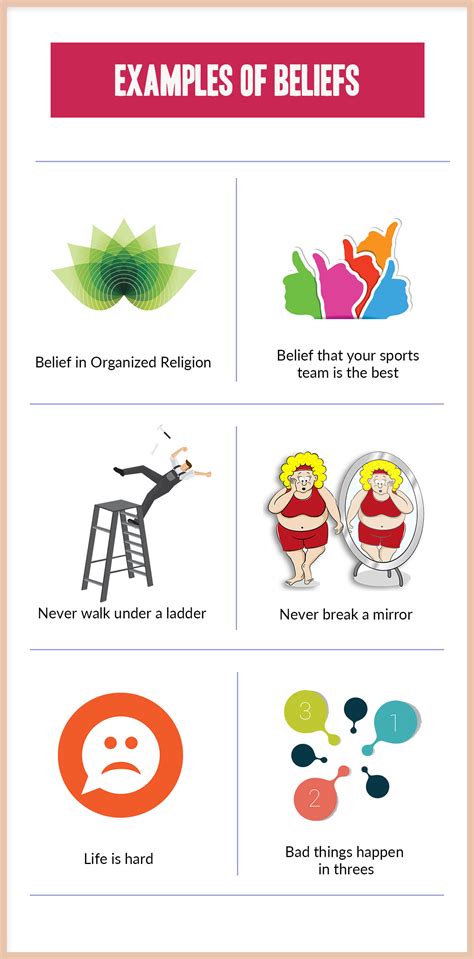Introduction

American popular beliefs have shaped the nation’s culture, values, and perspectives for centuries. These beliefs, often deeply ingrained in society, provide a framework through which we understand the world and make sense of our experiences. However, as times change and new knowledge emerges, it becomes imperative to critically examine these beliefs and determine their relevance and validity in the modern context.
This article delves into the realm of American popular beliefs, exploring their origins, examining their impact on society, and advocating for a thoughtful reassessment of their validity. By engaging in this process, we can create a more informed and progressive society, capable of embracing change while preserving the core values that have served us well.
Challenging the Status Quo: Re-examining Common Assumptions
American popular beliefs often stem from a blend of tradition, habit, and culturally transmitted ideas. While some of these beliefs may have served a purpose in the past, they may no longer be relevant or accurate in today’s world. The process of re-examining these assumptions requires critical thinking, open-mindedness, and a willingness to challenge the status quo.
- Relying on Confirmation Bias: Seeking out information that confirms existing beliefs, while ignoring conflicting evidence.
- Engaging in Ad Hominem Attacks: Attacking the person making the argument instead of addressing the argument’s validity.
- Assuming Everything is a Conspiracy: Dismissing evidence or arguments based on the assumption that they are part of a sinister plot.
- Ignoring Scientific Evidence: Relying solely on anecdotal evidence or personal experience, while disregarding scientific consensus.
- Rejecting Change Out of Fear: Clinging to familiar beliefs out of fear of the unknown, even when new evidence suggests they are outdated.
How to Step-by-Step Approach to Re-examining Popular Beliefs
- Identify the Belief: Clearly define the belief you are questioning and its origins.
- Gather Evidence: Seek out credible sources of information, including scientific studies, historical accounts, and expert opinions.
- Weigh the Evidence: Critically analyze the evidence, considering its validity, reliability, and relevance.
- Formulate a Conclusion: Based on the evidence, reach a reasoned conclusion about the validity of the belief.
- Be Open to Change: If the evidence suggests the belief is outdated or inaccurate, be willing to adjust your perspective.
- Promotes Critical Thinking: Encourages individuals to think critically and question assumptions.
- Enhances Decision-Making: Provides a more informed basis for making decisions, based on evidence rather than outdated beliefs.
- Fosters Progress: Allows society to move forward by embracing new knowledge and discarding outdated practices.
- Promotes Social Cohesion: Balances tradition with progress, ensuring that society adapts to changing circumstances while preserving core values.
- Empowers Individuals: Equips individuals with the skills and knowledge to navigate an ever-changing world.
- Increased resilience to misinformation and propaganda
- Enhanced ability to evaluate information critically
- More informed decision-making
- Reduced polarization and increased empathy
- Greater social progress and innovation
Conclusion
Re-examining American popular beliefs is an essential endeavor for any progressive society. By questioning assumptions, critically analyzing evidence, and embracing change, we can ensure that our beliefs are rooted in reality and align with our values. This process empowers individuals, promotes social cohesion, and ultimately leads to a more enlightened and prosperous society.
Table 1: Popular Beliefs that Have Changed Over Time
| Belief | Past | Present |
|---|---|---|
| The Earth is flat | True | False |
| Bloodletting is effective for treating illness | True | False |
| Women are intellectually inferior to men | True | False |
Table 2: Sources of Evidence for Re-examining Popular Beliefs
| Source | Type of Evidence |
|---|---|
| Scientific studies | Empirical data, research findings |
| Historical accounts | Historical records, primary sources |
| Expert opinions | Insights from experts in relevant fields |
| Personal experiences | Anecdotal evidence, individual accounts |
| Statistical data | Numerical data, demographics, trends |
Table 3: Common Mistakes to Avoid When Re-examining Popular Beliefs
| Mistake | Description |
|---|---|
| Confirmation bias | Seeking information that confirms existing beliefs, while ignoring conflicting evidence |
| Ad hominem attacks | Attacking the person making the argument instead of addressing the argument’s validity |
| Assuming everything is a conspiracy | Dismissing evidence or arguments based on the assumption that they are part of a sinister plot |
| Ignoring scientific evidence | Relying solely on anecdotal evidence or personal experience, while disregarding scientific consensus |
| Rejecting change out of fear | Clinging to familiar beliefs out of fear of the unknown, even when new evidence suggests they are outdated |
Table 4: Benefits of Re-examining Popular Beliefs
| Benefit | Description |
|---|---|
| Increased resilience to misinformation and propaganda | Enhanced ability to discern fact from fiction |
| Enhanced ability to evaluate information critically | Improved decision-making, reduced susceptibility to manipulation |
| More informed decision-making | Based on evidence rather than outdated beliefs |
| Reduced polarization and increased empathy | Greater understanding of different perspectives, fostering harmony |
| Greater social progress and innovation | Embracing new knowledge and discarding outdated practices |
